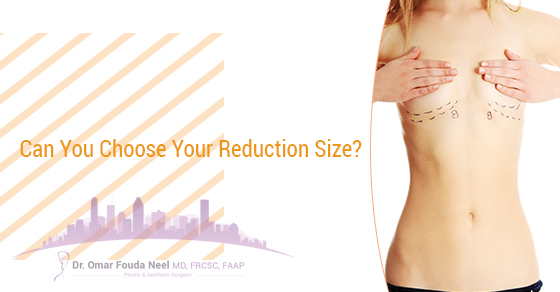Do You Get to Choose Your Size in a Breast Reduction?
Despite the popularity of breast implants in the modern market, not every woman wants to increase the size of their bust. In fact, many women suffer daily from pain, discomfort, and even a lack of self-confidence brought on by overly large breasts.

Disproportionately large breasts can have a wide range of negative health effects including back and neck pain, psychological effects such as depression, and difficulty exercising.
A breast reduction, also known as reduction mammoplasty, is a surgical procedure in which excess tissue is removed from the breasts to make them more manageable and comfortable.
Signs that you should consider this procedure include:
- Breasts are disproportionately large and cause pain or discomfort in the neck, back, and shoulders.
- Deep grooves forming in the shoulders caused by the straps of an overburdened bra.
- Significant asymmetry of the breasts.
- Self-conscious, unhappy, or embarrassed feelings caused by a large bust.
- Difficulty finding clothing that fits correctly due to large breasts.
What Happens During a Breast Reduction
During the consultation appointment, patients will have the opportunity to talk to their surgeon about the results they are hoping to achieve. Your ideal shape and size will help the surgeon decide which technique to use in order to achieve the results you want.
If your breast reduction surgery is covered by your insurance or by the province, they may stipulate certain requirements for the minimum amount of tissue to remove based on your weight and height. Beyond that, you will need to decide what size you would like to be based on your lifestyle, long-term desires, and the width of your chest.
There are a few different ways your surgeon may decide to perform your breast reduction procedure. For breasts only slightly too large with healthy, elastic skin, it may be possible to use liposuction alone to remove some of the excess fat. This is a particularly effective solution for postmenopausal women as a larger percentage of their breast tissue is made up of fat. This procedure can also be used to treat asymmetry of up to 1 cup size.
In the case of larger breasts, it may be necessary to use a vertical incision from the bottom edge of the areolas to the breast crease. This allows the surgeon greater access to the tissues, enabling them to remove a greater quantity of fat and excess skin. For extremely large breasts your surgeon may recommend removing the nipple and moving it to a higher plane for a most flattering appearance post-surgery.
Your exact size cannot be determined prior to surgery, although doctors can get close to the desired size if the circumstances are right. As Dr. Fouda Neel what your options are during your consultation so you can get a better understanding of your potential results!














